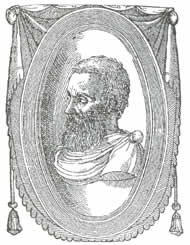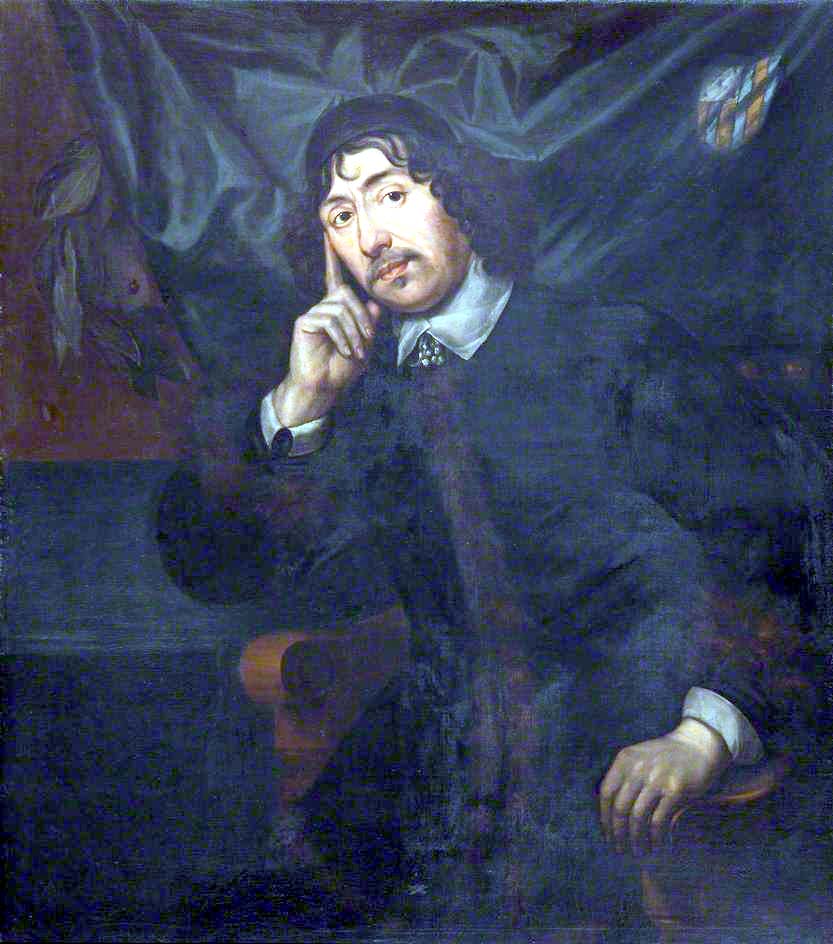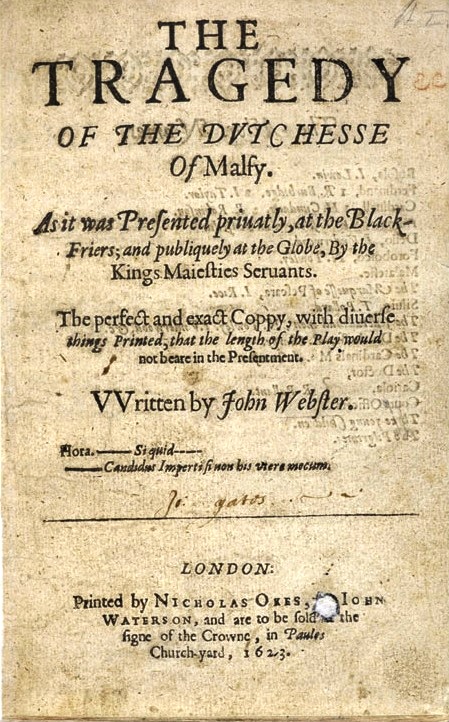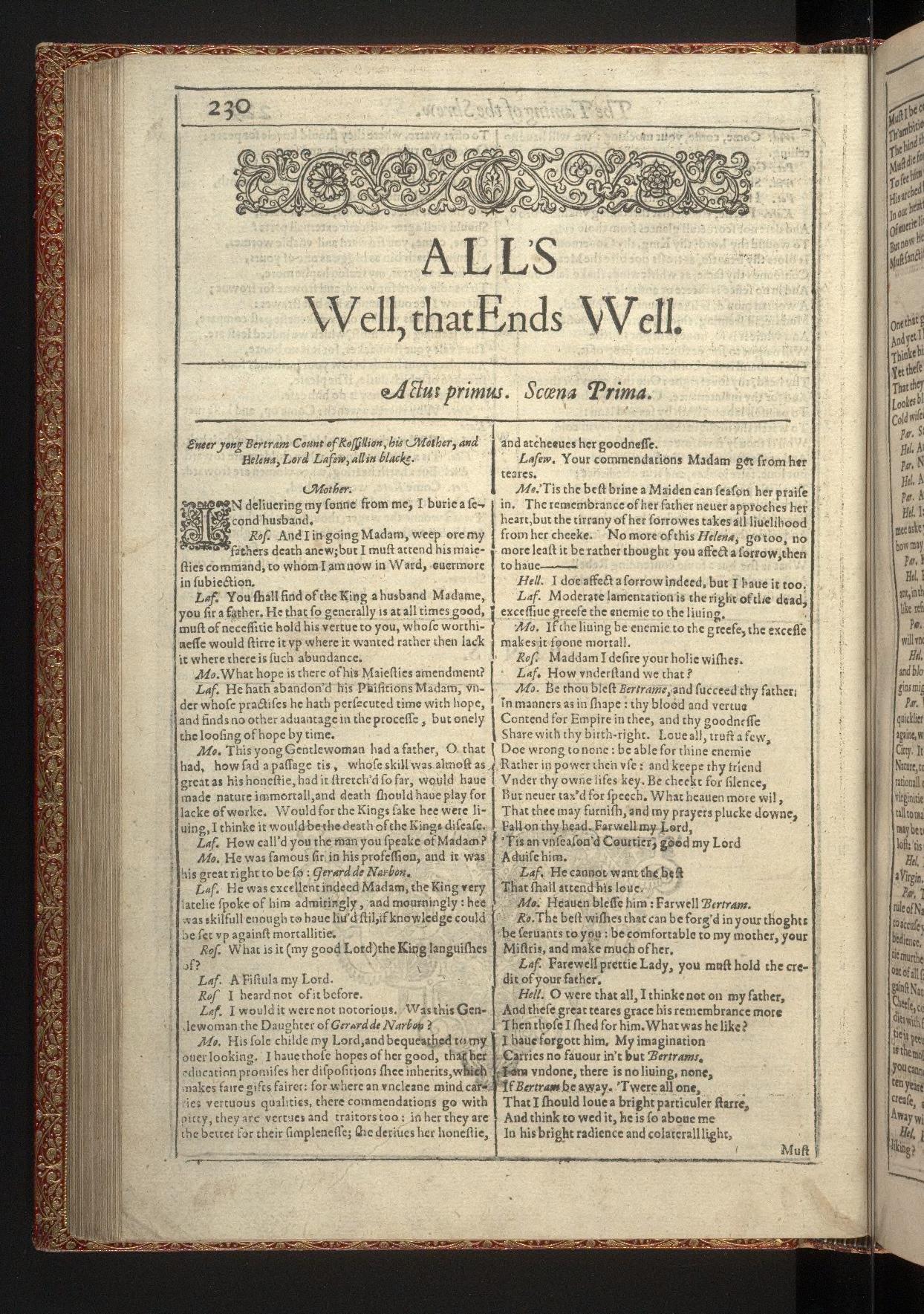|
William Painter (author)
William Painter (or Paynter, c. 1540 – between 19 and 22 February 1595) was an English author and translator. As a clerk of the Ordnance in the Tower of London, he was accused of fraud aimed at amassing a personal fortune at public expense. Personal life Painter was long believed to be a native of Kent due to confusion with a namesake, who matriculated at St John's College, Cambridge in 1554. Painter married Dorothy Bonham in about 1565. They had at least five children – a son and four daughters. By 1587 their son Anthony had joined his father in his government work. Painter made an oral will dated 14 February 1594 and died between 19 and 22 February 1595 in London. He was buried in St Olave Hart Street, not far from the Tower. Administrative career In 1561 Painter became a clerk of the Ordnance in the Tower of London, a post he held for the rest of his life. In 1566 the Lieutenant-General of the Ordnance, Edward Randolph, supplemented Painter's income with an annuity and ... [...More Info...] [...Related Items...] OR: [Wikipedia] [Google] [Baidu] |
Tower Of London
The Tower of London, officially His Majesty's Royal Palace and Fortress of the Tower of London, is a historic castle on the north bank of the River Thames in central London. It lies within the London Borough of Tower Hamlets, which is separated from the eastern edge of the square mile of the City of London by the open space known as Tower Hill. It was founded towards the end of 1066 as part of the Norman Conquest. The White Tower (Tower of London), White Tower, which gives the entire castle its name, was built by William the Conqueror in 1078 and was a resented symbol of oppression, inflicted upon London by the new Normans, Norman ruling class. The castle was also used as a prison from 1100 (Ranulf Flambard) until 1952 (Kray twins), although that was not its primary purpose. A grand palace early in its history, it served as a royal residence. As a whole, the Tower is a complex of several buildings set within two concentric rings of defensive walls and a moat. There were severa ... [...More Info...] [...Related Items...] OR: [Wikipedia] [Google] [Baidu] |
Giovanni Francesco Straparola
Giovanni Francesco "Gianfrancesco" Straparola, also known as Zoan or Zuan Francesco Straparola da Caravaggio (ca. 1485?–1558), was an Italian writer of poetry, and collector and writer of short stories. Some time during his life, he migrated from Caravaggio to Venice where he published a collection of stories in two volumes called '' The Facetious Nights'' or '' The Pleasant Nights''. This collection includes some of the first known printed versions of fairy tales in Europe, as they are known today. Biography Life Not much is known of Straparola's life except for a few facts regarding his published works. He was likely born some time around 1485 in Caravaggio, Italy (on the Lombard plain east of Milan). However, nothing more is known of his life until 1508 when he was found to be in Venice where he signed his name "Zoan" on the title page of his ''Opera nova de Zoan Francesco Straparola da Caravaggio novamente stampata'' (''New Works''). Prior to issuing the first volume of ... [...More Info...] [...Related Items...] OR: [Wikipedia] [Google] [Baidu] |
Love's Cruelty
''Love's Cruelty'' is a Caroline-era stage play, a tragedy written by James Shirley, and first published in 1640. The play was licensed for performance by Sir Henry Herbert, the Master of the Revels, on 14 November 1631. Like the majority of Shirley's dramas, it was acted by Queen Henrietta's Men at the Cockpit Theatre. The play was entered into the Stationers' Register on 25 April 1639 by the booksellers Andrew Crooke and William Cooke, along with three other Shirley plays. (The three were ''The Opportunity,'' '' The Coronation,'' and ''The Night Walker.'') The play was published the next year, in a quarto printed by Thomas Cotes — though only Andrew Crooke's name is on the title page. Shirley based his plot on material from two sources: novel 36 of the '' Heptameron'' of Marguerite of Navarre, and novel 6, decade 3, of the ''Hecatomithi'' of Cinthio. Shirley may have accessed Marguerite's tale in English translation in ''The Palace of Pleasure'' by William Painter. Sh ... [...More Info...] [...Related Items...] OR: [Wikipedia] [Google] [Baidu] |
James Shirley
James Shirley (or Sherley) (September 1596 – October 1666) was an English dramatist. He belonged to the great period of English dramatic literature, but, in Charles Lamb's words, he "claims a place among the worthies of this period, not so much for any transcendent genius in himself, as that he was the last of a great race, all of whom spoke nearly the same language and had a set of moral feelings and notions in common." His career of play writing extended from 1625 to the suppression of stage plays by Parliament in 1642. Biography Early life Shirley was born in London and was descended from the Shirleys of Warwick, the oldest knighted family in Warwickshire. He was educated at Merchant Taylors' School, London, St John's College, Oxford, and St Catharine's College, Cambridge, where he took his BA degree in or before 1618. His first poem, ''Echo, or the Unfortunate Lovers'' was published in 1618; no copy of it is known, but it is probably the same as 1646's ''Narcissus ... [...More Info...] [...Related Items...] OR: [Wikipedia] [Google] [Baidu] |
The Duchess Of Malfi
''The Duchess of Malfi'' (originally published as ''The Tragedy of the Dutchesse of Malfy'') is a Jacobean revenge tragedy written by English dramatist John Webster in 1612–1613. It was first performed privately at the Blackfriars Theatre, then later to a larger audience at The Globe, in 1613–1614. Published in 1623, the play is loosely based on events that occurred between 1508 and 1513 surrounding Giovanna d'Aragona, Duchess of Amalfi (d. 1511), whose father, Enrico d'Aragona, Marquis of Gerace, was an illegitimate son of Ferdinand I of Naples. As in the play, she secretly married Antonio Beccadelli di Bologna after the death of her first husband Alfonso I Piccolomini, Duke of Amalfi. The play begins as a love story, when the Duchess marries beneath her class, and ends as a nightmarish tragedy as her two brothers undertake their revenge, destroying themselves in the process. Jacobean drama continued the trend of stage violence and horror set by Elizabethan tragedy, u ... [...More Info...] [...Related Items...] OR: [Wikipedia] [Google] [Baidu] |
John Webster
John Webster (c. 1580 – c. 1632) was an English Jacobean dramatist best known for his tragedies '' The White Devil'' and ''The Duchess of Malfi'', which are often seen as masterpieces of the early 17th-century English stage. His life and career overlapped with Shakespeare's. Biography Webster's life is obscure and the dates of his birth and death are not known. His father, a carriage maker also named John Webster, married a blacksmith's daughter named Elizabeth Coates on 4 November 1577 and it is likely that Webster was born not long after, in or near London. The family lived in St Sepulchre's parish. His father John and uncle Edward were Freemen of the Merchant Taylors' Company and Webster attended Merchant Taylors' School in Suffolk Lane, London. On 1 August 1598, "John Webster, lately of the New Inn" was admitted to the Middle Temple, one of the Inns of Court; in view of the legal interests evident in his dramatic work, this may be the playwright. Webster married 17-year-o ... [...More Info...] [...Related Items...] OR: [Wikipedia] [Google] [Baidu] |
Beaumont And Fletcher
Beaumont and Fletcher were the English dramatists Francis Beaumont and John Fletcher, who collaborated in their writing during the reign of James I (1603–25). They became known as a team early in their association, so much so that their joined names were applied to the total canon of Fletcher, including his solo works and the plays he composed with various other collaborators including Philip Massinger and Nathan Field. The first Beaumont and Fletcher folio of 1647 contained 35 plays; 53 plays were included in the second folio in 1679. Other works bring the total plays in the canon to about 55. While scholars and critics will probably never render a unanimous verdict on the authorship of all these plays—especially given the difficulties of some of the individual cases—contemporary scholarship has arrived at a corpus of about 12 to 15 plays that are the work of both men. (See the individual pages on Beaumont and Fletcher for more details.) Works The plays generally r ... [...More Info...] [...Related Items...] OR: [Wikipedia] [Google] [Baidu] |
All's Well That Ends Well
''All's Well That Ends Well'' is a play by William Shakespeare, published in the ''First Folio'' in 1623, where it is listed among the comedies. There is a debate regarding the dating of the composition of the play, with possible dates ranging from 1598 to 1608. also aCentre for Early Modern Studies, University of Oxford accessed 22 April 2012: "The recent redating of All’s Well from 1602–03 to 1606–07 (or later) has gone some way to resolving some of the play’s stylistic anomalies" ... " ylistically it is striking how many of the widely acknowledged textual and tonal problems of All’s Well can be understood differently when we postulate dual authorship." Bertram is compelled to marry Helena. Bertram refuses to consummate their marriage. He goes to Italy. In Italy he courts Diana. Helena meets Diana. They perform the bed trick. The play is considered one of Shakespeare's " problem plays", a play that poses complex ethical dilemmas that require more than typically si ... [...More Info...] [...Related Items...] OR: [Wikipedia] [Google] [Baidu] |
Edward III (play)
''The Raigne of King Edward the Third'', commonly shortened to ''Edward III'', is an Elizabethan play printed anonymously in 1596, and probably partly written by William Shakespeare. It began to be included in publications of the complete works of Shakespeare only in the late 1990s. Scholars who have supported this attribution include Jonathan Bate, Edward Capell, Eliot Slater, Eric Sams, Giorgio Melchiori,Melchiori, Giorgio, ed. ''The New Cambridge Shakespeare: King Edward III'', 1998, p. 2. and Brian Vickers. The play's co-author remains the subject of debate: suggestions have included Thomas Kyd, Christopher Marlowe, Michael Drayton, Thomas Nashe, and George Peele. The play contains several gibes at Scotland and the Scottish people, which has led some critics to think that it is the work that incited George Nicholson, Queen Elizabeth's agent in Edinburgh, to protest against the portrayal of Scots on the London stage in a 1598 letter to William Cecil, Lord Burghley. This ... [...More Info...] [...Related Items...] OR: [Wikipedia] [Google] [Baidu] |
Timon Of Athens
''Timon of Athens'' (''The Life of Tymon of Athens'') is a play written by William Shakespeare and probably also Thomas Middleton in about 1606. It was published in the ''First Folio'' in 1623. Timon lavishes his wealth on parasitic companions until he is poor and rejected by them. He rejects mankind and goes to live in a cave. The earliest-known production of the play was in 1674, when Thomas Shadwell wrote an adaptation under the title '' The History of Timon of Athens, The Man-hater''. Multiple other adaptations followed over the next century, by writers such as Thomas Hull, James Love and Richard Cumberland. The straight Shakespearean text was performed at Smock Alley in Dublin in 1761, but adaptations continued to dominate the stage until well into the 20th century. ''Timon of Athens'' was originally grouped with the tragedies, but some scholars name it one of the problem plays. Characters * Timon: a lord and, later a misanthrope, of Athens. * Alcibiades: captain o ... [...More Info...] [...Related Items...] OR: [Wikipedia] [Google] [Baidu] |
Romeo And Juliet
''Romeo and Juliet'' is a Shakespearean tragedy, tragedy written by William Shakespeare early in his career about the romance between two Italian youths from feuding families. It was among Shakespeare's most popular plays during his lifetime and, along with ''Hamlet'', is one of his most frequently performed plays. Today, the Title character, title characters are regarded as archetype, archetypal young lovers. ''Romeo and Juliet'' belongs to a tradition of tragic Romance (love), romances stretching back to Ancient history, antiquity. The plot is based on an Italian tale translated into verse as ''The Tragical History of Romeus and Juliet'' by Arthur Brooke (poet), Arthur Brooke in 1562 and retold in prose in ''Palace of Pleasure'' by William Painter (author), William Painter in 1567. Shakespeare borrowed heavily from both but expanded the plot by developing a number of supporting characters, particularly Mercutio and Count Paris, Paris. Believed to have been written between ... [...More Info...] [...Related Items...] OR: [Wikipedia] [Google] [Baidu] |
William Shakespeare
William Shakespeare ( 26 April 1564 – 23 April 1616) was an English playwright, poet and actor. He is widely regarded as the greatest writer in the English language and the world's pre-eminent dramatist. He is often called England's national poet and the " Bard of Avon" (or simply "the Bard"). His extant works, including collaborations, consist of some 39 plays, 154 sonnets, three long narrative poems, and a few other verses, some of uncertain authorship. His plays have been translated into every major living language and are performed more often than those of any other playwright. He remains arguably the most influential writer in the English language, and his works continue to be studied and reinterpreted. Shakespeare was born and raised in Stratford-upon-Avon, Warwickshire. At the age of 18, he married Anne Hathaway, with whom he had three children: Susanna, and twins Hamnet and Judith. Sometime between 1585 and 1592, he began a successful career in London as an ... [...More Info...] [...Related Items...] OR: [Wikipedia] [Google] [Baidu] |










